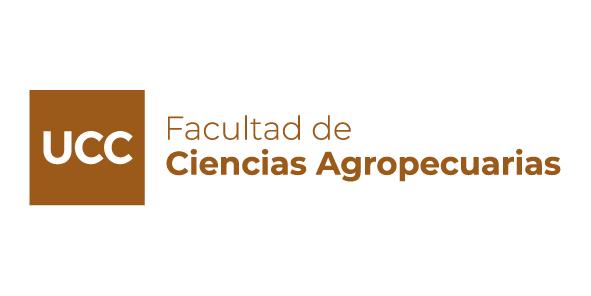Identificación de población de riesgo para alergia a la leche de vaca
DOI:
https://doi.org/10.22529/me.2017.2(3)02Palabras clave:
alergia a la leche de vaca, haplogrupos, niños, mutación no descripta, genoma mitocondrialResumen
ANTECEDENTES: Los genotipos asociados con la alergia a la leche de vaca (ALV) son desconocidos. Aún no han podido ser replicados en poblaciones independientes, y podrían ser responsables de la marcada variabilidad de la respuesta clínica individual a las proteínas lácteas.OBJETIVO: Caracterizar haplogrupos, de la Región D-Loop del ADN mitocondrial, en un grupo de niños ALV, con el fin de arribar a un mejor conocimiento de la herencia biológica y genética en la etiología de la enfermedad.POBLACION Y METODO: Diseño: Análisis de mutaciones o variantes de la región D-loop del genoma mitocondrial. Población: 41 niños de ambos sexos de 0-2 años, 11 alérgicos ALV y 30 controles. (Río Cuarto, Córdoba, Argentina) Los pacientes ALV se dividieron, según la sintomatología que presentaban en 6 casos con Dermatitis Atópica (DA) + Enfermedad Gastrointestinal (EGI) y en 5 casos con Rinitis y Asma (RA). La Región D-Loop del genoma mitocondrial se amplificó por PCR. El análisis filogenético fue calculado usando el programa CLUSTAL OMEGA, the Neighbor-Joining, BLOSUM62, con los datos estudiados y grabados por Jukes-Cantor y luego con Kimura-2, programas específicos disponibles (software).RESULTADOS: Se encontró una mutación o variante nucleotídica no descripta T16519C en la transición de haplogrupos asociada a pacientes ALV con DA+EGI en 6/6 casos, comparados con 5/5 casos con RA que no la presentaron, mientras que en los controles se la observó solo en 6/30, p=0,0312; RR 2,900.CONCLUSIONES: Estos hallazgos sugieren que esta mutación probablemente aumente la posibilidad de padecer ALV asociada con DA+EGI.Descargas
Referencias
Leung PSC, Shu S-A, Chang C. Clinic Rev Allerg Immunol 2014; 46:169-179 https://doi.org/10.1007/s12016-014-8411-5
Tan N TH, Ellis JA, Saffery R, Allen KJ. The role of genetics and environment in the rise of childhood food allergy. Clin Exp Allergy 2012; 42:20-29. https://doi.org/10.1111/j.1365-2222.2011.03823.x
Rona RJ, Keil T, Summers C, Gislason D, Zuidmeer L, Sodergren E, et al. The prevalence of food allergy: a meta-analysis. J Allergy Clin Immunol 2007; 120:638-46. https://doi.org/10.1016/j.jaci.2007.05.026
Hourihane JO, Dean TP, Warner JO. Peanut allergy in relation to heredity, maternal diet, and other atopic diseases: results of a questionnaire survey, skin prick testing, and food challenges. BMJ1996; 313:518-21. https://doi.org/10.1136/bmj.313.7056.518
Tsai HJ, Kumar R, Pongracic J. Familial aggregation of food allergy and sensitization to food allergens: a family-based study. Clin Exp Allergy 2009; 39:101-9. https://doi.org/10.1111/j.1365-2222.2008.03111.x
Chinthrajah RS, Hernandez JD, Boyd SD, Galli SJ, Nadeau KC. Molecular and cellular mechanisms of food allergy and food tolerance. J Allergy Clin Immunol. 2016 ;137(4):984-97. https://doi.org/10.1016/j.jaci.2016.02.004
Ortolani C, Pastorello EA. Food allergies and food intolerances. Best Pract Res Clin Gastroenterol 2006; 20:467-83. https://doi.org/10.1016/j.bpg.2005.11.010
Fiocchi A, Brozek J, Schunemann H, Bahna SL, Von Berg A, Beyer K, et al. World Allergy Organization (WAO) Diagnosis and Rationale for Action against Cow's Milk Allergy (DRACMA) Guidelines. Pediatr Allergy Immunol 2010; 21:1-125. https://doi.org/10.1111/j.1399-3038.2010.01068.x
American Academy of Pediatrics Committee on Nutrition. Hypoallergenic infant formulae. Pediatrics 2000; 106:346-49. https://doi.org/10.1542/peds.106.2.346
Muraro A, Werfel T, HoffmannSommergruber K, Roberts G et al. EAACI Food Allergy and Anaphylaxis Guidelines Group. EAACI Food Allergy and Anaphylaxis Guidelines. Diagnosis and management of food allergy. Allergy 2014; 69: 1008- 1025. https://doi.org/10.1111/all.12429
Wallace DC, Brown MD, Lott MT. Mitochondrial DNA variation in human evolution and disease. Gene 1999; 238:211-30. https://doi.org/10.1016/S0378-1119(99)00295-4
Torroni A, Wallace DC. Mitochondrial DNA variation in human populations and implications for detection of mitochondrial DNA mutations of pathological significance. J Bioenerg Biomembr 1994; 26:261- 71. https://doi.org/10.1007/BF00763098
Brown MD, Torroni A, Reckord CL, Wallace DC. Phylogenetic analysis of Leber's hereditary optic neuropathy mitochondrial DNA's indicates multiple independent occurrences of the common mutations. Hum Mutat 1995; 6:311- 25. https://doi.org/10.1002/humu.1380060405
Kofler B, Mueller EE, Eder W, Stanger O, Maier R, Weger M, Hass A, et al. Mitochondrial DNA haplogroup T is associated with coronary artery disease and diabetic retinopathy: a case control study. BMC Med Genet 2009; 10:35-42. https://doi.org/10.1186/1471-2350-10-35
Wakeley J. Substitution rate variation among sites in hypervariable region 1 of human mitochondrial DNA. J Mol Evol 1993; 37:613-23. https://doi.org/10.1007/BF00182747
Saitou N, Nei M. The Neighborjoining Method: A New Method for Reconstructing Phylogenetic Trees. Mol. Biol. Evol. 1987; 4(4):406-425.
Eddy SR. Where did the BLOSUM62 alignment score matrix come from? Nat Biotechnol. 2004; 22(8):1035-6. https://doi.org/10.1038/nbt0804-1035
Jukes TH and Cantor CR (1969). Evolution of Protein Molecules. New York: Academic Press. pp. 21-132.
https://doi.org/10.1016/B978-1-4832-3211-9.50009-7
Kimura M (1980). "A simple method for estimating evolutionary rates of base substitutions through comparative studies of nucleotide sequences". Journal of Molecular Evolution 16 (2): 111-120. https://doi.org/10.1007/BF01731581
Bedoret D, Singh AK, Shaw V, Hoyte EG, Hamilton R, DeKruyff RH, et al. Changes in antigenspecific T cell number and function during oral desensitization in cow's milk allergy enabled with omalizumab. Mucosal Immunol. 2012; 5: 267-76. https://doi.org/10.1038/mi.2012.5
Rieder MJ, Tayler SL, Tobe VO, Nickerson DA. Automating the identification of DNA variations using quality-based fluorescence re-sequensing: Analysis of the human mitochondrial genome. Nucleic Acids Res. 1998; 26: 967- 73. https://doi.org/10.1093/nar/26.4.967
Piazza A, Rendine S, Minch E, Menozzi P, Mountain J, CavalliSforza LL. Genetics and the origin of European languages. Proc. Natl. Acad. Sci. USA 1995; 92:5836-40. https://doi.org/10.1073/pnas.92.13.5836
Fagundes N, Kanitz R, Eckert R. Mitochondrial population genomics supports a single pre-Clovis origin with a coastal route for the peopling of the Americas. Book: Biomolecular Archaeology: An Introduction 2008; 284-86.












